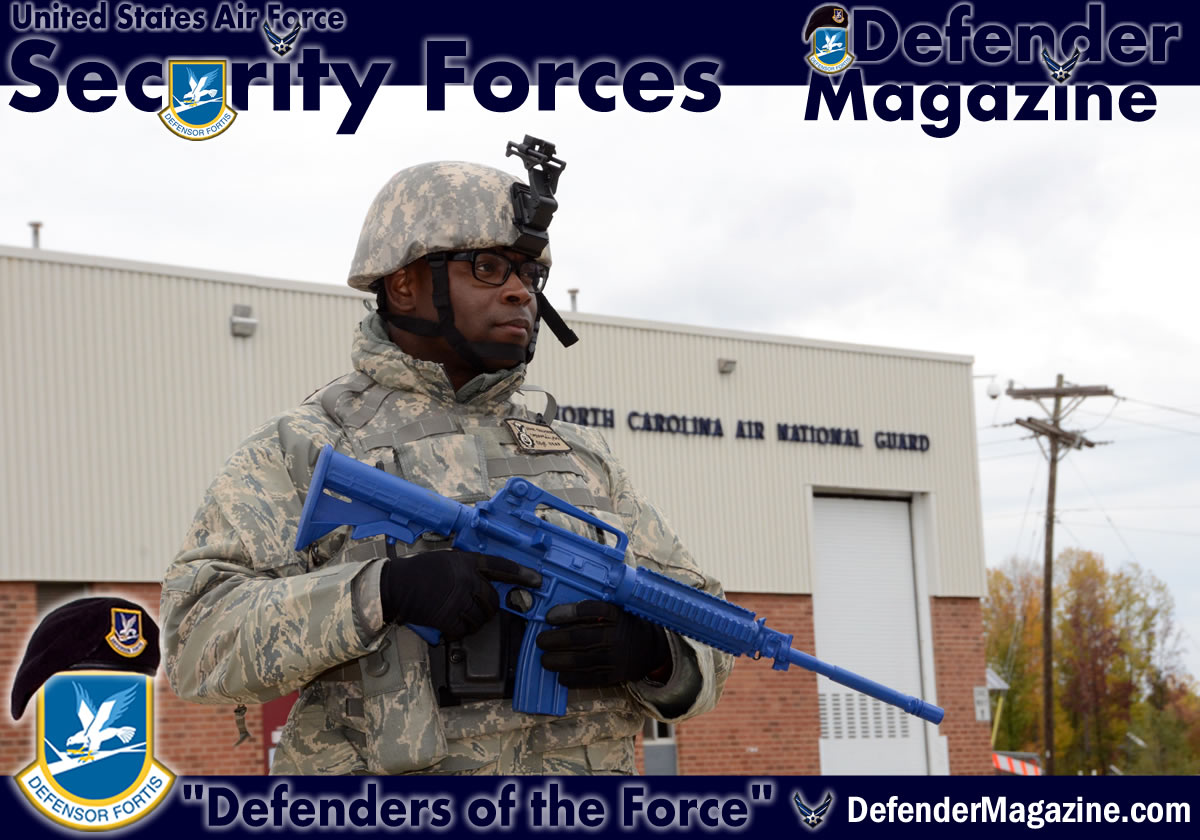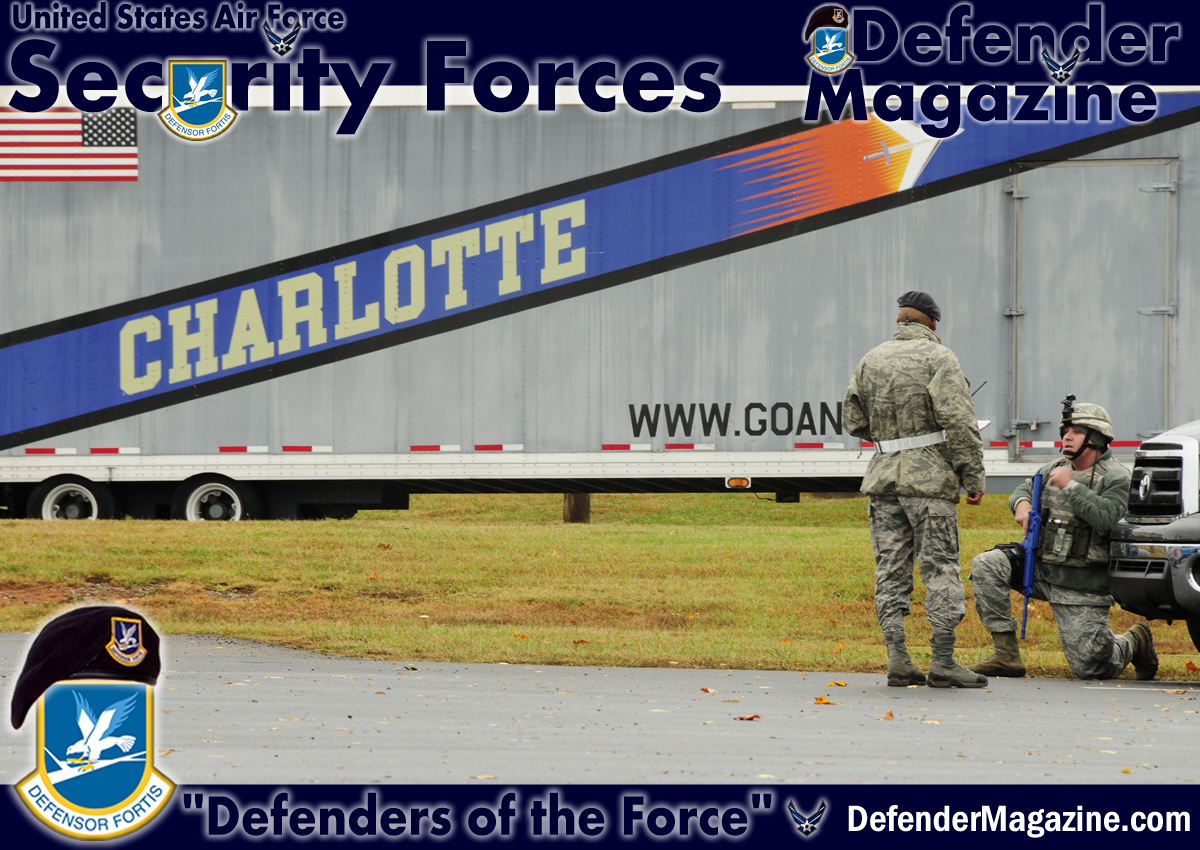11/8/2014 – CHARLOTTE, N.C. — The 145th Airlift Wing went on lock down as Airmen participated in an Anti-Terrorism exercise, Nov. 1, 2014, at the North Carolina Air National Guard (NCANG) base, Charlotte Douglas Intl. Airport.
In accordance with Department of Defense policy, this exercise, held annually, is a coordinated event to train all participants and ensure successful coordination is met between the different units on base and agencies off base in an effort to deter terrorist incidents, employ countermeasures and lessen the effects of a terrorist incident.
The 145th Force Support Squadron (FSS) has many supporting roles to the Airmen of the NCANG. Putting together a Search and Recovery (FSR) team is one of their missions. These FSR members work closely with other units assisting medical examiners and coroners in collecting human remains and personal effects from the scene of the simulated terrorist attack.
On Saturday afternoon an audible explosion echoed across the base simulating the detonation of a car bomb which breached the base perimeter.
Computer warnings, accountability calls and force protection procedures were initiated, as well as the activation of the Emergency Operation Center (EOC) composed of key leadership personnel.
“Support and coordination from security and the fire department was wonderful, and our team did an excellent job,” said the search and recovery officer, Lt. Col. Lisa Kirk, 145th Force Support Squadron commander.
Chief Master Sgt. Daryl Cook, 145th Civil Engineer Squadron Fire Chief, was part of the inspection team reviewing the exercise and part of the EOC. “As a Wing we made great strides and the evaluation went well. We learned some things and can do better,” said Cook.
The exercise was conducted to evaluate the response capabilities of the 145th Airlift Wing and to simulate a terrorist event. It incorporated the response actions of our Initial Response Force, Security Forces, Civil Engineers and the Disaster Response Force (CAT/EOC/UCC) to allow the ability to sustain operations while responding to an incident.
“It’s an exercise to evaluate ourselves and make things better. We have to be prepared for any type of contingency, and we’re doing our part to be ready,” said Cook.
Not only was the wing able to respond to a simulated heightened threat, but they were able to do so while maintaining 100% accountability of their forces and sustaining the wing’s daily mission.
by Master Sgt. Patricia F. Moran and Staff Sgt. Julianne M.Showalter
145th Public Affairs

